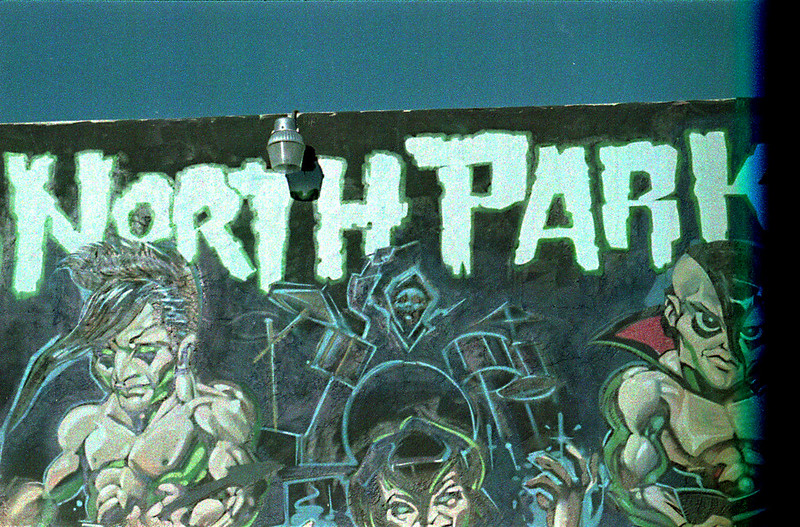Bleach bypass is a process that has intrigued me for a while. Recently, while listening to Matt Melcher's podcast Box of Cameras, he mentioned using this process in an upcoming project. I had tried this before and not really liked the results, but this prompted me to try again since he specifically mentioned Fujicolor film and I happen to have some of that in the fridge. It is Expired (2010) Fujicolor 100, and he is using Fujicolor 200, but I figured "How different could it really be?". It's that kind of thinking that often gets me into photographic trouble. But that's how I think, so waddaya gonna do?
To take a step back, what is bleach bypass? Well to answer that, you have to know the various steps in color film processing. The steps are:
- Develop
- Bleach
- Fix
- Developer does what it says. It develops the silver image, just like with black and white film. Byproducts of the silver development activate the color dyes selectively so that color dye clouds are formed in the emulsion.
- Bleach converts the developed silver back into silver halides, basically 'undeveloping' the silver image.
- Fixer, then dissolves away the 'undeveloped' silver halides, just like in black and white development, leaving just the color dye clouds in the emulsion layers.
I developed this picture of a mural in the North Park neighborhood of San Diego using bleach bypass. Now I didn't get quite what I thought I would or even what I wanted. There was a base fog because the film was 10 years expired and of unknown storage history. So the negatives were very dense and my scanner (Epson V600) had trouble pushing enough light through them to get the image. So there is electronic noise on top of the add grain from the remaining silver. So what to do? I just took the strips and dunked them in the bleach (room temp for about 15 minutes). Curiously, I did not need to re-fix. The negatives were nice and 'clear', that is the base fog was gone and they looked like normally developed color negatives. One more note is that I used ECN2 chemistry on these. That system is meant for use with motion picture films, but this was just regular old color negative (CN) film designed for C-41 development. So technically, this is a cross process, though not a drastic one like developing slide film as negatives.
So here are the results, first the bleach bypass, then the same image after bleaching.. Let me know which you like better. I personally like the bleached image better, but I will definitely try this process with other film stocks. Since it is 'reversible', there is really nothing to lose.


The bleached one definitely has a cleaner look. Still, I can imagine that the grainy look of the first might work well with certain subjects. It's neat that you are able to exercise this kind of control over processing. I'm usually happy with just getting my processing to do what it is designed for. I've been getting rather think negatives lately, so am replacing my developer and my thermometer. It is a challenge to resist excessive paranoia at times.
ReplyDeleteI'm reading the last edition of Newhall's History of Photography at present. He has pretty good descriptions of all the processes that were tried since the beginning of photographic time.
Thanks Mike. I think "control" is a bit of an overstatement regarding anything I do photographically. I think serendipity and occasional good luck keep me going. I agree that the bleach bypass process lends itself to some subjects and lighting situations better than others. Also, some films have more silver than others, so the process will do different things. The book sounds interesting. I often wish I had more photographic history in my head. Do you find that it effects the way you see or shoot your photos?
DeleteThis comment has been removed by the author.
ReplyDelete